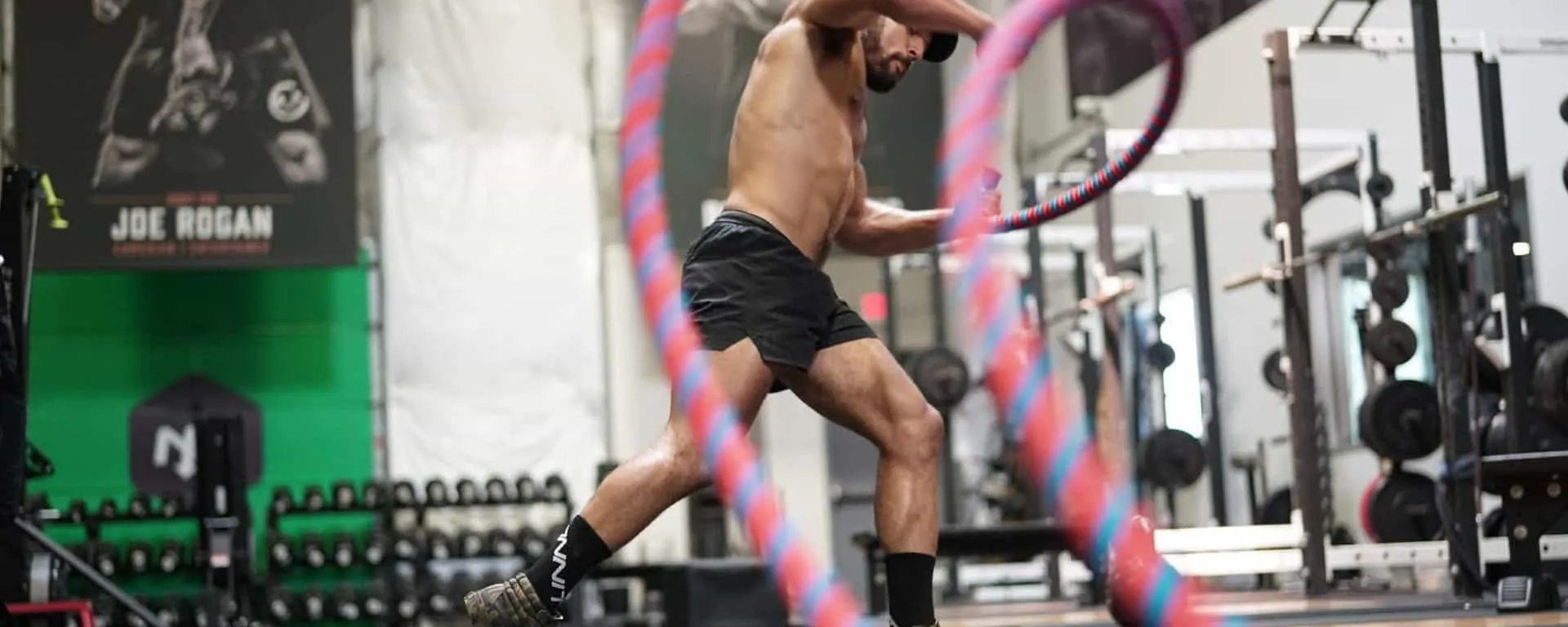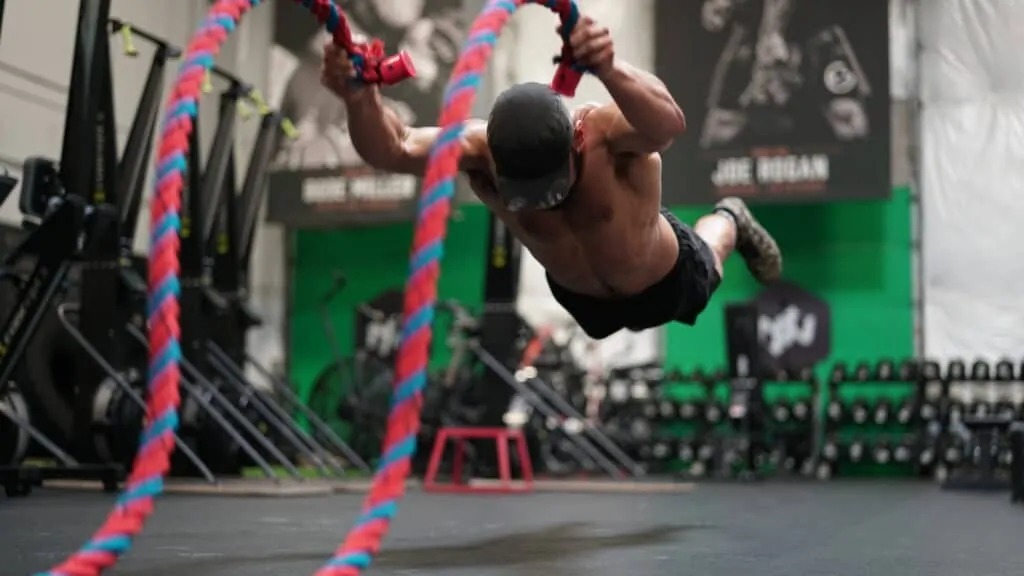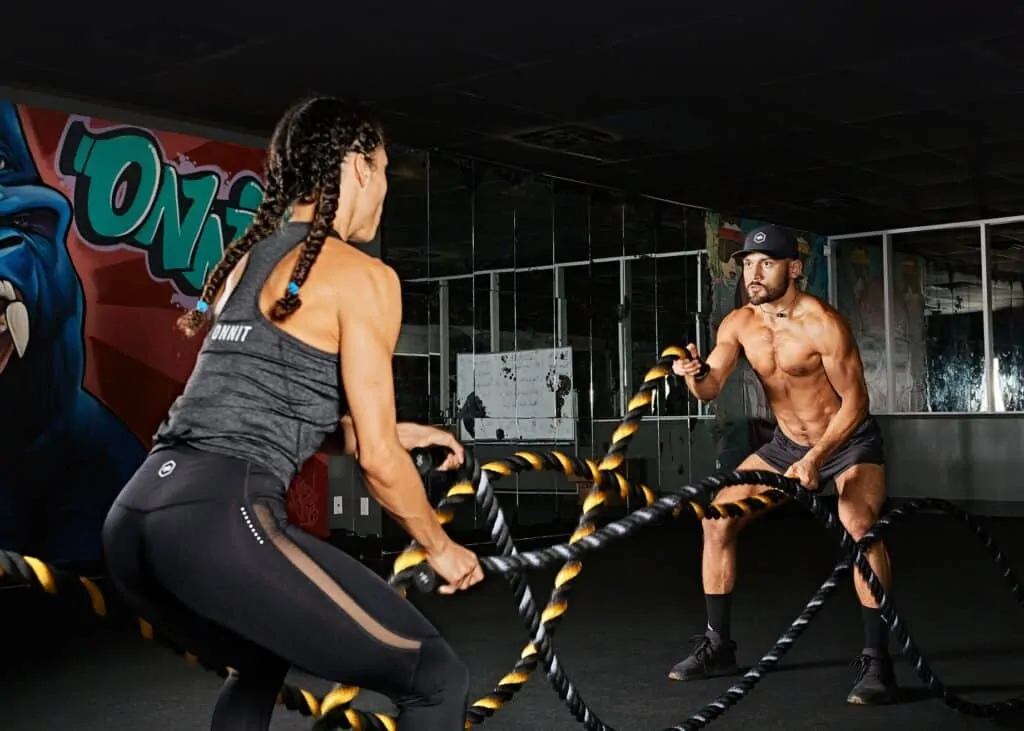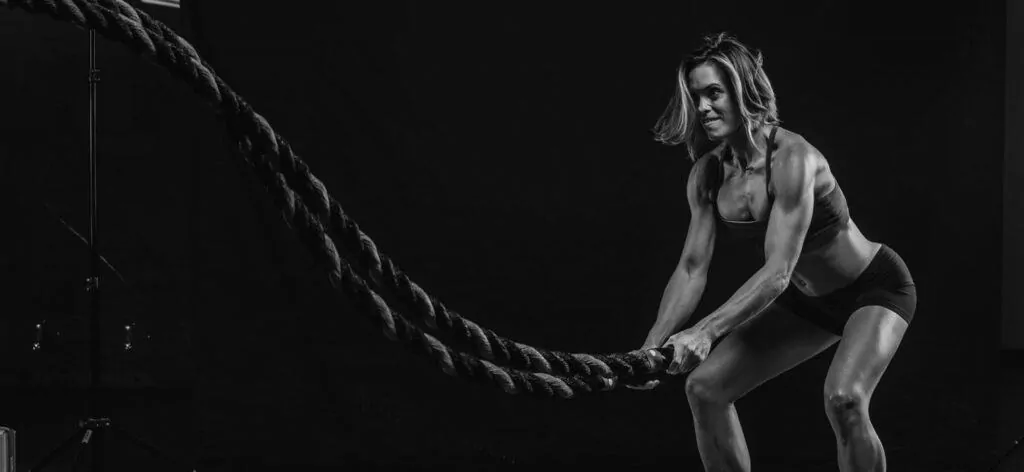
Short on time but still need to get in a killer session? Battle ropes are your new best friend.

Battle Rope Workouts: Why Even the Quick Ones are Effective
Battle ropes do so much more than give your upper body a burn like never before. If you use them right, they can help you cut fat quickly, build muscle endurance, and even improve your balance and stability.
Let’s break down what makes them so effective.
1. High Intensity
Anyone who’s ever tried to keep a battle rope “waving” can attest to the work it puts your body through, even in as little as 30 seconds. Similar to sprinting or jumping rope, the quick movement and pulse of your arms rapidly spikes your heart rate and gets your muscles firing.
Structuring workouts with sets of intense bursts of activity like this (aka, high-intensity interval training) has been proven to be one of the best ways to burn fat quickly while still retaining muscle. This is because it not only burns a high amount of calories as you’re doing work but also optimizes hormones that improve fat burning over time, like growth hormone and adrenaline. [*] This means that even after your workout is done, your body is still burning more fat than if you had done a steady-state workout, like jogging on a treadmill.
In essence, it helps create adaptations in your skeletal, metabolic, and aerobic systems that improve your flows and keep your body shedding fat continuously.
Another great aspect of these types of workouts is that they’re usually no longer than 20 minutes, and are still more effective for fat loss than most forms of cardio. The key with these is to go all-out on your work phase (so waving the rope with everything you have for 10-20 seconds), having a short rest period for 10-20 seconds, then repeating for a full workout.
2. Endurance
Working with battle ropes builds muscle endurance unlike anything else. This is because when moving the ropes, your muscles are in a constant flexed state; it’s not like lifting then lowering a weight, where you get a brief rest at the bottom of the movement.
This trains your muscles to work under tension for long periods of time without fatiguing, which is useful not only in workouts but in sports like MMA, where you’re getting no rest for several minutes at a time.
Having muscle endurance can also cross over everyday activities, like moving furniture or carrying a heavy load (ahem, 15 bags of groceries on one arm …). You’ll find you can hold a flexed muscle state for longer without feeling like your muscle is going to give out.
3. Whole-Body Integration
Most people assume battle rope workouts strictly work arms and upper body. In reality, when ropes are done right your entire body should be under tension. This is especially true with your core, back, and glutes, which add power to your wave. You’ll notice if you attempt to move the rope with just your arms, you’ll quickly burn out.
Workouts that challenge your entire body to engage more muscle groups at once, which can lead to a higher calorie burn and increase growth hormone and testosterone, two hormones have proven to boost weight loss and boost muscle growth. [*]
Battle ropes also have the unique ability to not only work these large muscle groups, but also the smaller, more important areas we often forget about, like grip, shoulder stabilizers, and obliques. As you increase the weight of your rope, your grip strength has to increase in order to control it, while stabilizer muscles like your obliques need to work harder to keep your torso centered while providing power to the wave.
Keeping the smaller muscles in your shoulders under tension with ropes is also great for increasing shoulder stability. This is crucial for preventing shoulder injuries, as it provides a strong base for controlling your KB swings and lifts without overloading the shoulder joint. (read more here on why shoulder stability is paramount for preventing injuries).
How to Do Battle Rope Workouts (the many variations)
The most popular battle rope stance is the one you see in most photos: lightly squatted, arms in front of you holding the ropes, and moving one of both arms together trying to make waves.
However, this is only one of the endless possibilities of how to use the ropes. Keep in mind that you can do ropes in:
• A plank position
• Kneeling (isolating your upper body and chest more)
• Sitting in a sit-up position to engage your core
You can also integrate ropes into circuits, or switch up movements by:
• Alternating waves with exercises like burpees, lunges, or jump squats
• Moving the rope outward in circles instead of up and down to target different areas of the back
Even simply adjusting your distance to the anchor point can make ropes harder or easier. The closer you are to the anchor point, the easier it will be to have your wave reach it. The farther out you are, the more challenging it will be to move the wave down the rope.
High-Impact, Under 20 Battle Rope Workout
This routine will take roughly 10-15 minutes, but while it’s short on time, it makes up for in results.
We’ll be doing 20 seconds of high-intensity work followed by 20 seconds of rest, for 6 rounds. As you progress, you can increase the work time and shorten your rest time for more of a challenge.
Exercise One: Roll to Uppercut
Begin standing, holding the end of your rope in one hand. Now, thrust the fist holding the rope into an uppercut, engaging your core to add power. Lower int a slight squat and shuffle into a side step, swap hands, the uppercut with the opposite hand. Repeat.
Exercise Two: Tsunami Wave
Begin standing, legs wider than shoulder-width apart and rope gripped with both hands. Whip the rope up over your hand and slam it down powerfully, coming into a squat with each slam.
Exercise Three: One Arm Plank Wave
Come into a push up position in front of your rope, placing your feet wider than hip-width apart. Grab the rope with one hand, tightening your core to maintain your balance. Wave the rope for a count of 5-8 rapid waves with one arm, then switch and repeat with the other arm.
Get Your Ropes

A good battle rope should be durable, but not too stiff. This is why I use Onnit’s Battle Ropes (plus the fact that their price is super reasonable). They have the bonus of nylon end caps to act as stoppers for your hands, which helps with your grip and becomes a lifesaver when you’re super-setting with quick, high-intensity moves.
If you’re ready to take to the ropes in your regime, grab them here: Onnit Battle Ropes
